
Steelrising Review
Spiders Studio has been making RPGs for quite a while, though it wasn't really until 2019's GreedFall where it feels, to me, the larger community began to take notice. While a GreedFall II is also in the works, Spiders' newest release Steelrising goes in a different direction entirely, as far as RPG design goes.
While GreedFall was most frequently compared to BioWare RPGs, Steelrising is instead a Souls-like RPG, and Spiders refers to it as such. In the past, comparing games to Dark Souls became something of a meme, but honestly, Steelrising's inspirations are evident here. Real-time combat with emphasis on stamina, open-ended level design with a focus on finding shortcuts for easier navigation, imposing bosses requiring smart timing & coordination, it's all here.
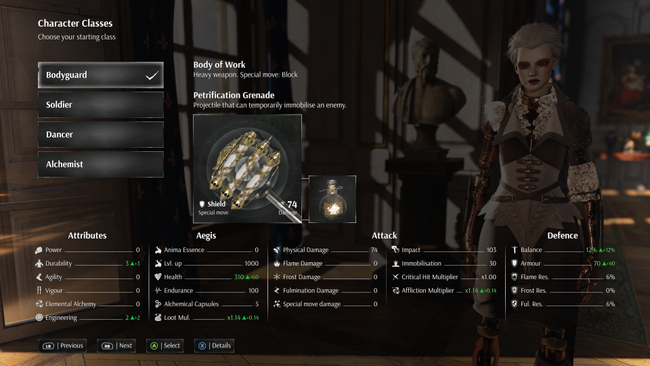
In Steelrising you play as Aegis, an automaton tasked by Marie Antoinette to stop the *other* automatons under the control of King Louis XVI during an alternate retelling of the French Revolution. On the way, you'll encounter various French historical figures from the time, such as Robespierre and Marquis de Lafayette, with whom you can eventually assist with various quests as you work to stop the machine horde.
You'll start out your adventure by picking one of four classes - Bodyguard, Soldier, Dancer, and Alchemist - each of which will start with a different weapon type. I decided to go with the heavy weapon Bodyguard class, equipped with a heavy hammer for short-range combat and various pistols for distance when I needed it. No matter which class you pick, though, you'll find plenty of various weapon types throughout the game, and you can allocate your stats freely upon level-up, so you aren't siloed into one gameplay style if you decide to switch things up later.
Steelrising should feel familiar to anyone who has played a Souls-like game before. You set out without much of a sense of direction, finding plenty of enemies who can do you in if you are not careful. You'll find Vestals that act as bonfires - regenerating your health while also respawning the enemies around you. You'll gain essences that act as souls, which can be spent to level up your character or buy items. There is no map to help you figure out where to go. You can pause, though.
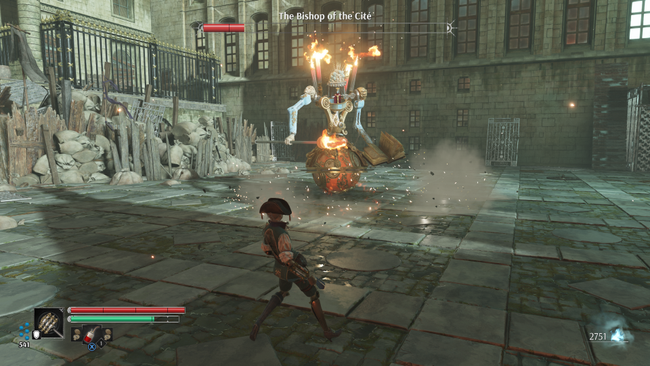
A key component to Steelrising's combat is that of a cooldown system. When you run out of stamina, instead of just waiting for it to replenish naturally, you get a chance to time a button press to regain a part of it immediately - as long as you time it well. This kinda sorta feels similar to timing a Ki Pulse in the Nioh games. You'll incur a slight bit of ice damage while doing this, but it'll allow you to immediately continue the assault or dash away if needed. The downside to this is that if you mistime the prompt, you'll be out of stamina for an extended period of time. Also, you can't cool-down too many times in a row, else the ice affliction will begin to freeze you in place. It's a nice system that keeps things moving, even if it may be a bit too easy to abuse.
Where Steelrising distinguishes itself most from other games in the sub-genre is with the inclusion of a light 'Metroidvania' element. That is, as you proceed through the game, you'll earn a handful of additional movement options that allow you to reach new areas you couldn't before. For example, one of these abilities is a grappling hook, which will let you grapple to various marked points dotted throughout the game world. Not only does this make exploring earlier areas a bit quicker now that new shortcut routes are available to you, but it also unlocks new areas in zones that you've explored before that point.
It's not anything that hasn't been done before, but it's a fine addition to a game that makes backtracking through earlier areas less of a hassle the second time around, much like the way opening shortcuts typically do for the Souls-like sub-genre.
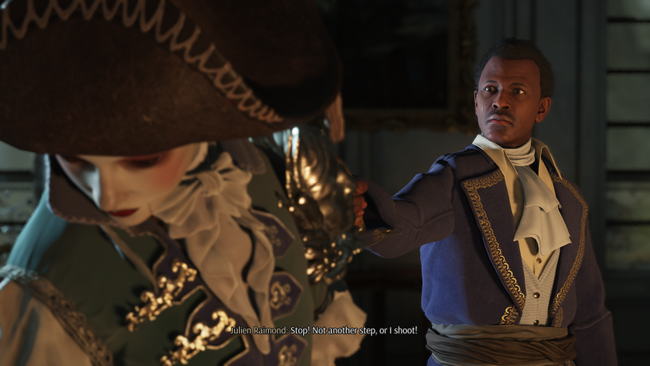
Broadly speaking, your main objective through Steelrising is to save various French figures of various standings to assist in the fight against Louis XVI's mechanoid army. These characters often have their own optional sub-quests for Aegis to complete, complete with a quest log to help the player stay on top of the requests they'll receive.
Unfortunately, these quests are not very interesting, either narratively or mechanically. They usually involve simply heading to a place on the map to interact with some object and then returning to the quest giver. The rewards you get for the quest often result in a paltry amount of Essence too, so it almost doesn't feel worth it from a gameplay perspective. It's fine, generally, but just not especially interesting. History buffs may get a kick out of seeing alternate versions of these historical figures interacting with each other, but the quest design in Steelrising feels like an inclusion out of some sense of obligation more than anything else.
For what it's worth, Steelrising does have optional waypoints you can toggle on or off, which will point you in the general direction you need to go in order to process with the main storyline or the various sidequests. This is undoubtedly useful, but even with it activated, you'll still have to figure out how to navigate the oft-labyrinthian streets to make it to your destination.
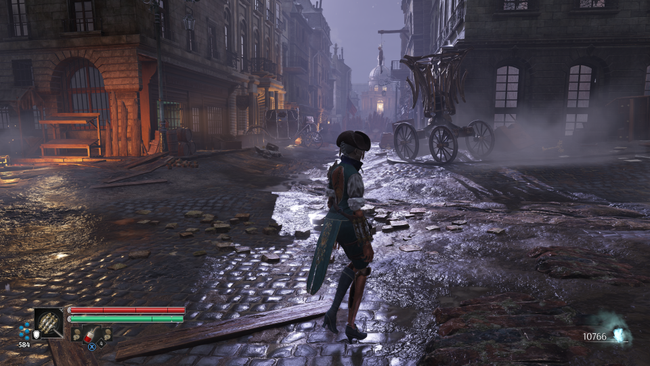
One of the more disappointing elements of Steelrising is - being set in Paris - many of the game's environments are various city streets, and they do tend to blend together. There are a couple of cool environments within, particularly around the Tuileries palace, but you can expect to find yourself getting lost in the city streets as you explore. There are barely any memorable landmarks to help you navigate your way around the numerous samey-looking buildings and hedges.
Boss fights are also something of a disappointment. I won't claim to be an expert player or anything like that, but I personally felt that many of these encounters had similar styles, with similar tricks being employed to take them down. For example, several bosses had some sort of obvious charge attack with a lengthy window right afterward to land a hit or two. Take advantage of these and you'll generally be set, as far as coming away victorious goes.
Steelrising is generally not too punishing of a game of its style. But for those interested in playing the game for its story, a customizable and optional Assist Mode is available. This mode lets you adjust things like damage reduction (up to 100%), endurance regeneration speed, and whether or not you lose your essence when you die. I personally think this is a welcome addition, especially for those who enjoyed GreedFall and want to support the developer even if they don't care much for Souls-like games.
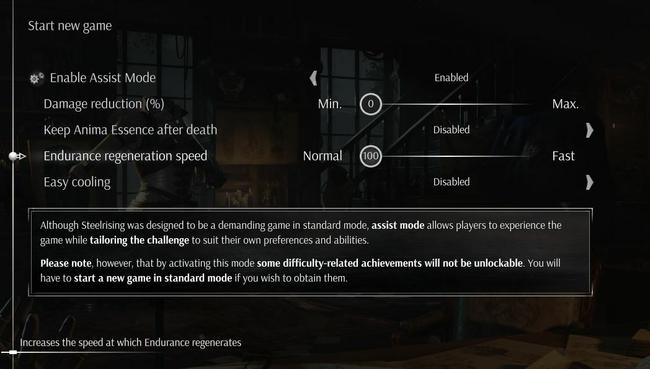
I didn't end up using the assist mode as I navigated the maze-like Parisian streets. Enemy variety throughout is a little bit limited, with several enemies exhibiting multiple forms to account for different elemental attributes. For example, you'll fight a fire-breathing snake-like automaton, an ice-breathing snake-like automaton, and a lightning-spewing snake-like automaton. It didn't bother me all too much, but it's still something that stuck out to me.
For all its other faults, Steelrising looks pretty nice, at least with high settings on the PC version. While I did run into a handful of visual glitches that'll hopefully be ironed out, the lighting details and textures are generally well done and well-suited for the art-style Steelrising exhibits. The facial animations are also considerably improved over Spiders' previous outings.
In concluding my time with Steelrising, I beat the final boss of Steelrising without realizing - at the time - that it was the final boss of the game. It felt like any of the other bosses I had faced, and the narrative afterward seemed to quickly push itself to a conclusion. I'm not sure if I somehow missed a 'real' final boss or something due some choices in-game - I don't think so - but the ending I got felt sudden and hurried.
I come away from Steelrising feeling satisfied but not enamored. It's an adequate foray into the Souls-like space, and it incorporates its own traversal gimmicks well enough, but lackluster quests, boss encounters, and level design hold it back from being an exceptional entry in the genre.